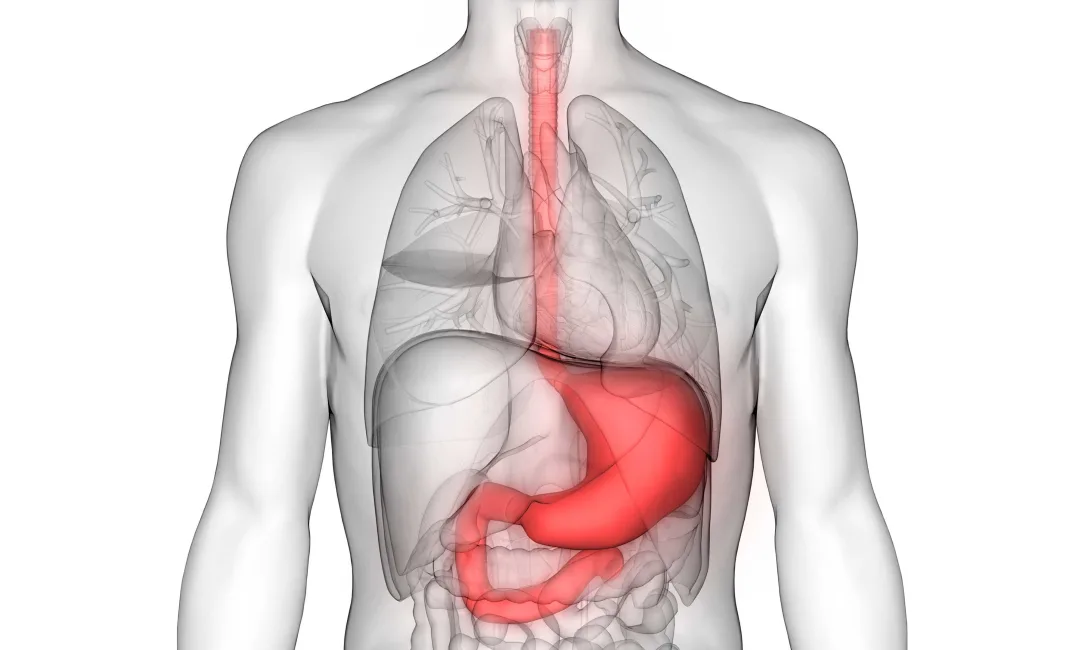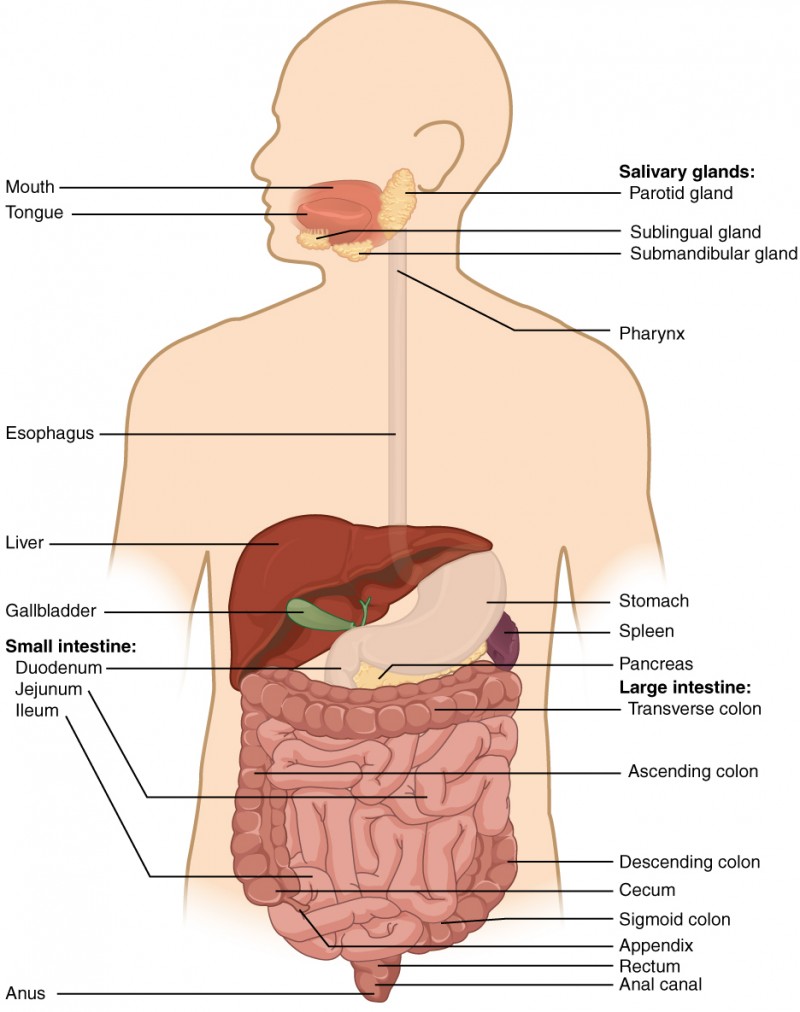Introduction to the digestive system

Introduction to the
Digestive System

Call : 800 4272
Esophagus (or oesophagus)
- Also known as the gullet or ‘food pipe’.
- It is a hollow tube that takes food and drink from the back of the throat down through the chest and into the stomach.
- It has a muscular wall that contracts to push food and drink down.
- At the bottom of the esophagus, there is a ring of muscle (sphincter) that acts as a valve between the stomach and the esophagus. This relaxes and opens during swallowing to allow food or drink to pass into the stomach. The rest of the time it is closed to prevent acidic stomach contents from entering the esophagus.
- Diseases that can affect the esophagus include acid reflux (GERD), achalasia, Barrett’s esophagus, eosinophilic esophagitis, and esophageal cancer.
Stomach
- It connects the stomach to the colon or large intestine.
- It is approximately 4 times longer than the large intestine – it is called ‘small’ as it is much narrower.
- The first part of the small intestine is called the duodenum – and beyond this are the jejunum and finally the ileum.
- The role of the small intestine is to digest and absorb food and nutrients. It also supports the body’s immune system and helps prevent harmful bacteria or other organisms from damaging the gut or entering the bloodstream.
- Food mixes with digestive enzymes secreted by the pancreas in the small intestine. The enzymes break down proteins, carbohydrates (sugars and starches), and fat in the food. The digested proteins, carbohydrates, and fats (together with water and various important vitamins and minerals) are absorbed across the gut wall into the bloodstream.
- By the time the contents reach the end of the small intestine and pass into the colon, most of the useful nutrients will have been digested and absorbed. Hard-to-digest vegetables can sometimes pass through the small intestine seemingly undigested.
- Diseases that can affect the small intestine include duodenal ulcers, celiac disease, Crohn’s disease, and SIBO.
Liver
- It is a large organ in the right upper part of the abdomen just under the lower ribs.
- It has a number of important jobs. These include storing fuel for the body (called glycogen); helping to process fats and proteins from digested food; making proteins that are essential for blood to clot; and helping to remove poisons and toxins from the body.
- Liver problems rarely cause pain.
- Diseases that can affect the liver include fatty liver, hepatitis, liver cirrhosis, and liver cancer.
Pancreas
- It is a long thin organ that sits behind the stomach near the back of the top of the abdomen.
- It has 2 important jobs – making insulin to control blood sugar and making digestive enzymes to help the gut break down and absorb nutrients from food.
- Diseases that can affect the pancreas include pancreatitis, pancreatic exocrine insufficiency (lack of digestive enzymes), and pancreatic cancer.
Large intestine (or large bowel)
- It connects the small intestine to the anus and is the final part of the digestive tract.
- The small intestine joins the large intestine at the bottom right of the abdomen close to the appendix.
- The large intestine is often called the colon – although strictly speaking the rectum (the very end part of the large intestine) is not part of the colon.
- Its shape is a bit like a large upside-down ‘U’. The large intestine is subdivided into the caecum, the ascending colon, the transverse colon, the descending colon, the sigmoid colon, and the rectum.
- The colon absorbs water from the stool and any remaining absorbable nutrients. It compacts the remaining indigestible waste matter as stool (or poop!).
- Stool is stored in the rectum until it is expelled by going to the toilet.
- Diseases that can affect the large intestine include IBD, IBS, diverticulitis, constipation, colon polyps, and colon cancer.
Gallbladder and bile ducts
- The liver helps to get rid of toxins from the body. It does this by secreting a yellow liquid called bile which mainly consists of waste products from the liver.
- Bile is secreted into ducts that run through the liver and which join up to form the common bile duct. The common bile duct empties into the duodenum (the first part of the small intestine) where bile mixes with the contents of the bowel and is carried out of the body. Bile can help with the digestion of fats.
- The gallbladder is a sack that is connected to the bile duct. Bile can be stored and concentrated in the gallbladder.
- The gallbladder sits just below the liver in the right upper part of the abdomen.
- Diseases that can affect the gallbladder and bile ducts include gallstones, gallbladder polyps, cholecystitis (inflamed gallbladder), primary biliary cholangitis (PBC), obstructive jaundice, and gallbladder/bile duct cancer

Dr. Neil is regarded as one of the leading experts in digestive health in Dubai. He is a UK-trained senior Consultant in Gastroenterology and Hepatology, with over 25 years of experience in investigating and treating GI and liver problems.
